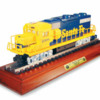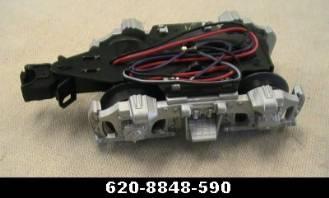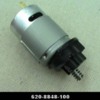I just snagged a beautiful Lionel Sante Fe blue and yellow freight scheme JC Penny GP38 # 6-28848 for a hundred bucks on EBay. The box description says, Features:
Railsounds sound system with crewtalk communication and towercom announcement, dual maintenance free can motors, die cast trucks, pilot and fuel tank, directional lighting, traction tires. Mint in box, never run.
With those features listed, I guess I was assuming it is TMCC equipped. Now I notice it never does say TMCC anywhere. Does anybody have any info on this engine or scenario? I'm not stressed about it, I could use one conventional engine for test purposes and I can always upgrade someday and the price was right either way, but of course, I would rather that I bought a fully TMCC equipped engine for that price. Thanks a million.












